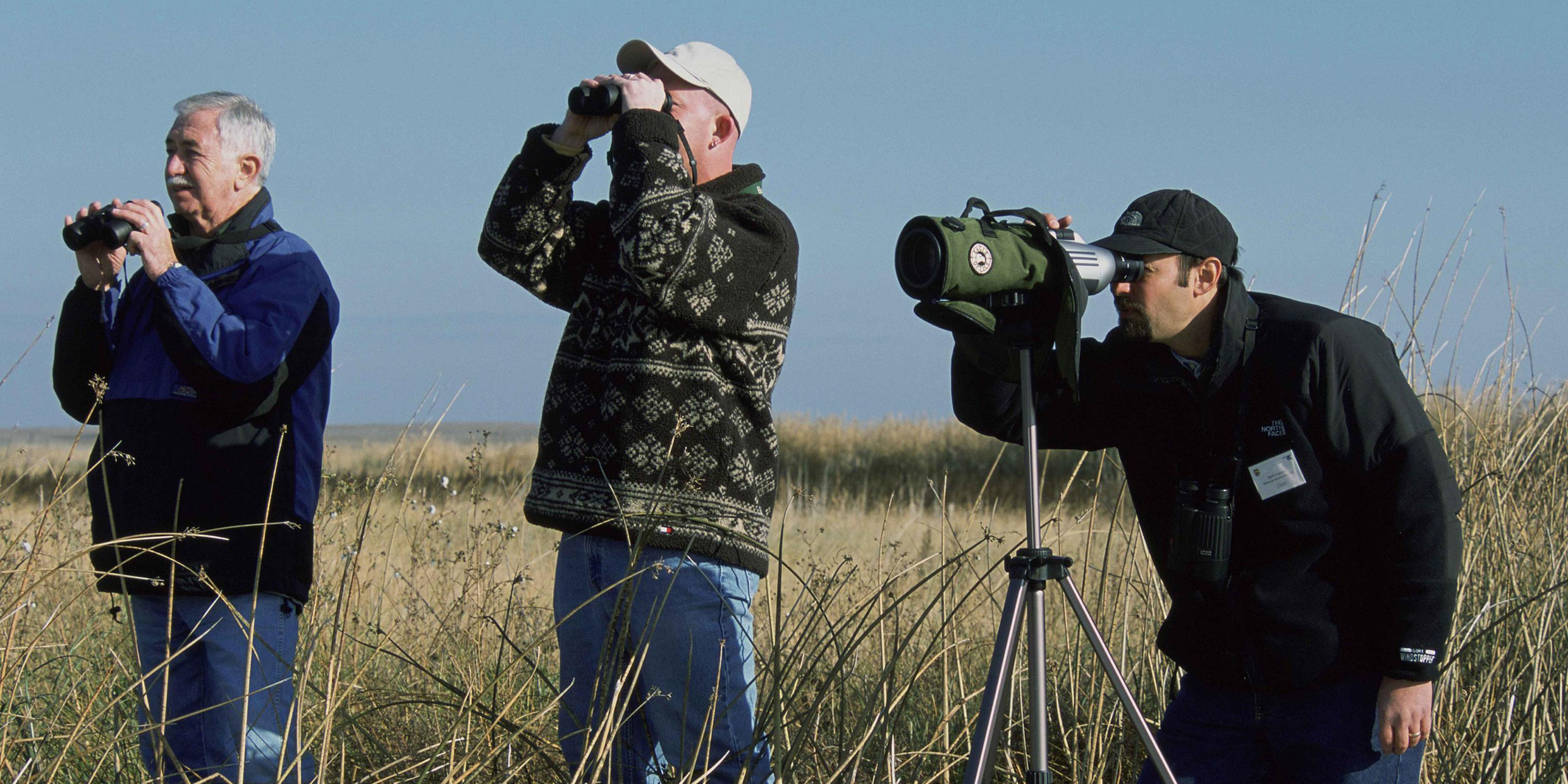Originally published 1 February 1988
You’ll find it tucked away in the middle of the Sunday Globe on the page with the weather report, next to the Megabucks winning number and “This Day in History.”
It’s the Massachusetts Audubon Society’s Bird Sightings report, and for some folks it’s more interesting than who won Saturday’s jackpot, what happened on this day in 1865, or even tomorrow’s weather.
One recent week, someone in East Boston counted 20 horned larks, 200 snow buntings, and 30 Lapland longspurs. Near Cashman Park in Newburyport an observer “bagged” a rough-legged hawk, three bald eagles, and two Iceland gulls. A western grebe appeared at the mouth of the Merrimack River in Salisbury, two thousand miles from its usual home, and an Audubon birder was there to record it.
I’m not a serious birder myself — not in the way of those dedicated observers, expert and amateur, who week by week inform the Audubon Society’s offices in Lincoln of birds they have seen. I wouldn’t recognize a western grebe if I saw one. But I’m glad that someone is paying attention to these things.
If a longspur ranges from Lapland to Massachusetts, that’s worth knowing. If three bald eagles show up in Newburyport, that’s worth knowing too. Not because such information has any practical value, but precisely because it is so totally, wonderfully “useless.”
Amateur birdwatching embodies one of science’s best qualities: Knowledge for its own sake — pure, unselfish curiosity. I admire the people who contribute to Bird Sightings because of the disinterestedness of their avocation. It’s no accident that our ancestors put bird wings on angels: Birds are beautiful, lively creatures that elude the normal boundaries of space and time. And in a world that sometimes seems preoccupied with greed, birds range blessedly beyond the laws of economics.
Feathers for wampum
There is one place on earth where birds are actually used as money. On Santa Cruz Island in the South Pacific, the tiny scarlet-colored honeyeater is hunted for its feathers, which are woven into a rolled wampum-like currency. Three hundred honeyeaters are required to produce a roll of feathers that in 1962 was worth about 20 Australian pounds. (My source on this matter is somewhat dated.) On Santa Cruz Island, a skilled birdsighter — like the person who spotted the adult mew gull at Raccoon Island in Quincy — might make himself a bundle. Here at home he makes do on sea mist and coffee.
Right now, at Race Point on Cape Cod, a patient amateur ornithologist on her day off is looking for puffins, and if she sees one she won’t make a dime. At Great Pond in Braintree, a retired schoolteacher is crouching in the wet grass counting buffle-heads and coots, and for his trouble won’t get anything but a cold.
John James Audubon was himself the economic victim of his passion for birds. In 1807 he opened a store in Louisville with his partner Ferdinand Rozier. The venture was not a success. Wrote Audubon: The store “went on prosperously when I attended to it; but birds were birds then as now, and my thoughts were ever and anon turning toward them as the objects of my greatest delight.”
Rather than attending to business, Audubon ranged the woods with his sketchbook and ornithological journal, leaving poor Rozier to mind the store. Rozier intended to grow rich, wrote Audubon, “and what more could he wish for?”
Audubon wished for something else — to see as many of the birds of North America as was humanly possible. The only part of his business that he enjoyed were the trips to New York or Philadelphia to purchase goods for the store — because he could study birds and their habits as he traveled through the forests of Ohio and Pennsylvania.
Audubon’s wife Lucy must have often wished her husband would forget birds and settle down to something “useful.” But that never happened. Audubon continued to be a failure in business until he managed to turn his hobby into a profession. In the end, his paintings of birds found a wide audience and Audubon became reasonably prosperous. He and Lucy lived out their last years comfortably in a fine big house on the Hudson River in what is now the Washington Heights section of New York City.
A recent Bird Sightings recorded red-bellied woodpeckers seen in Northampton, Springfield, and Southwick. The observers who spotted those southern invaders were out looking for something other than a quick buck. Let’s hope their spouses were as patient as Audubon’s Lucy.
The Boston Globe still publishes a weekly Bird Sightings report as provided by the Massachusetts Audubon Society. The sightings of local ornithologists are also available on the MassAudubon.org website. ‑Ed.



